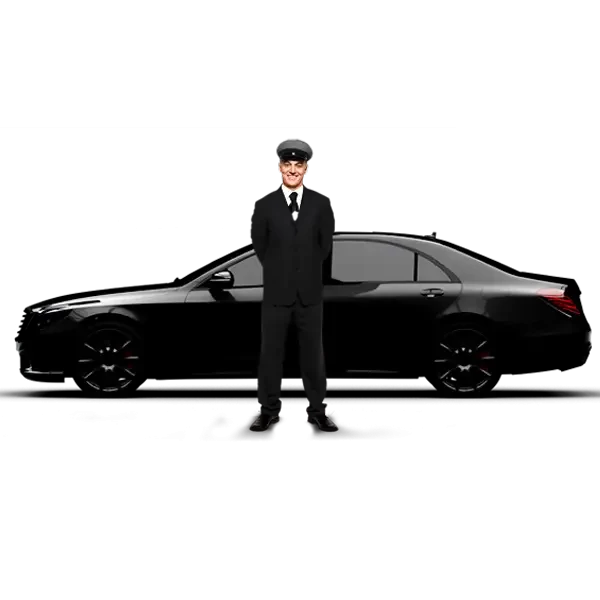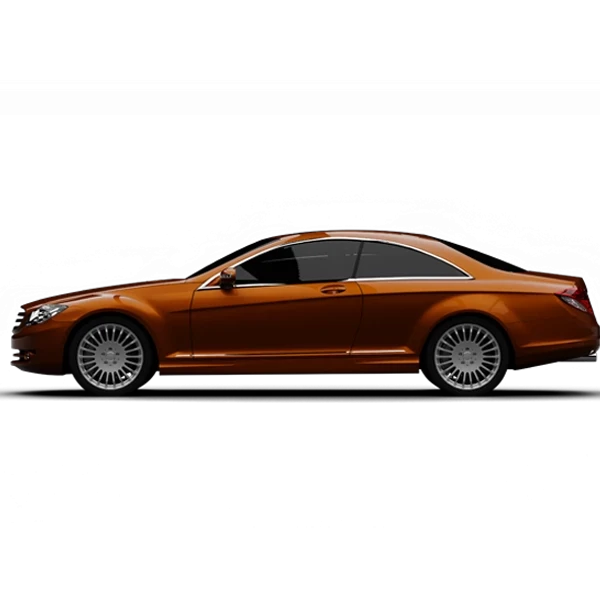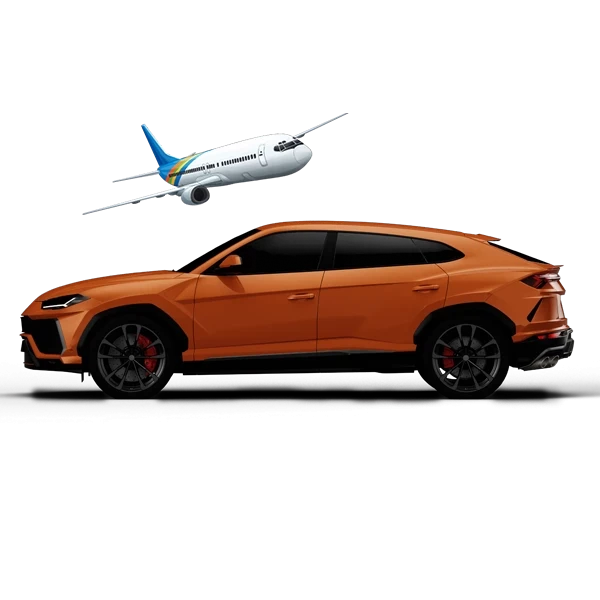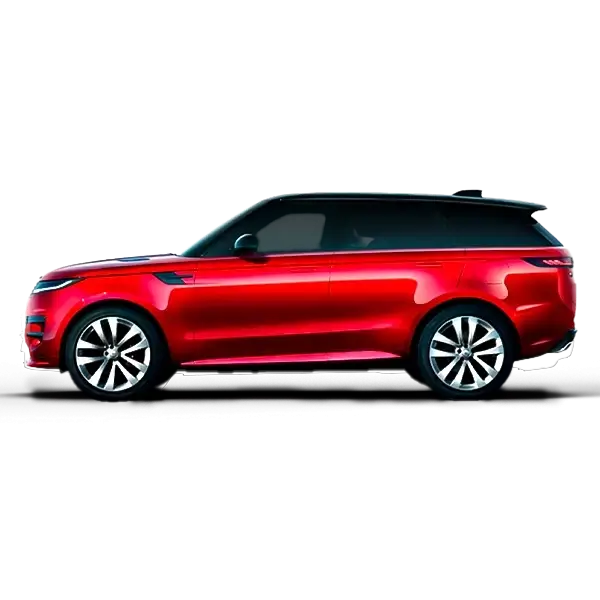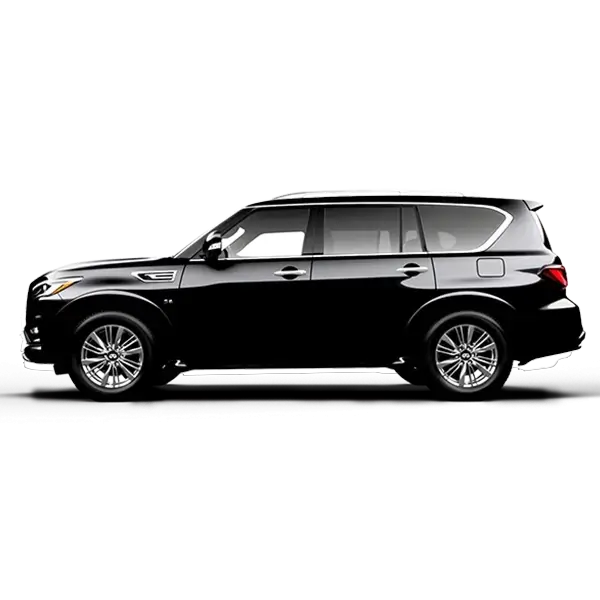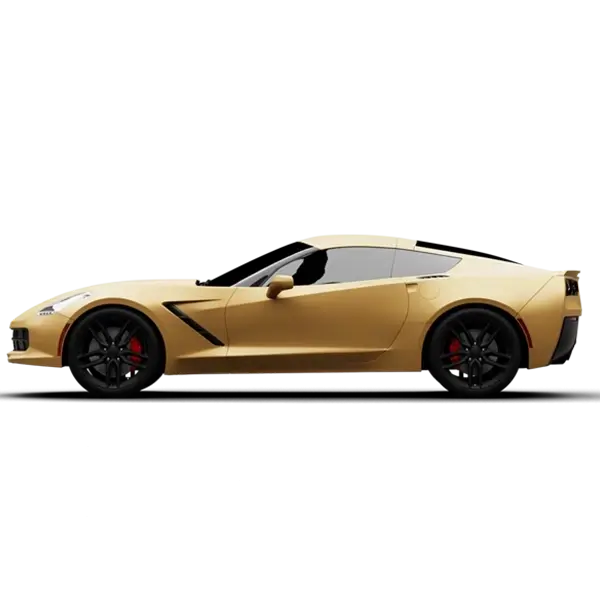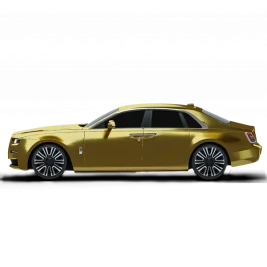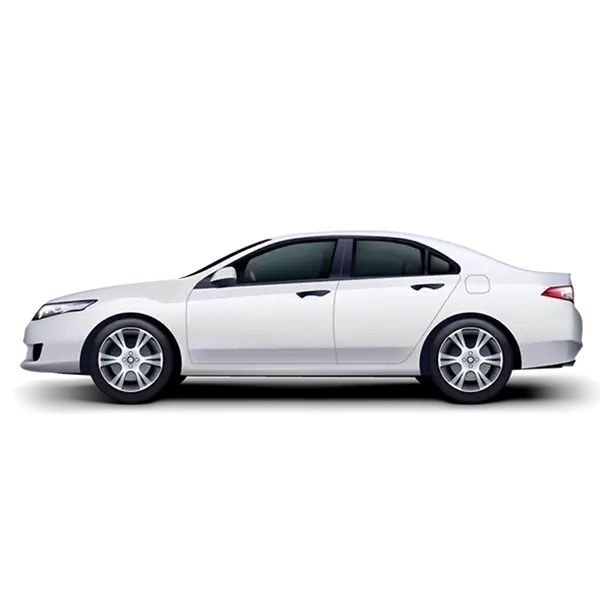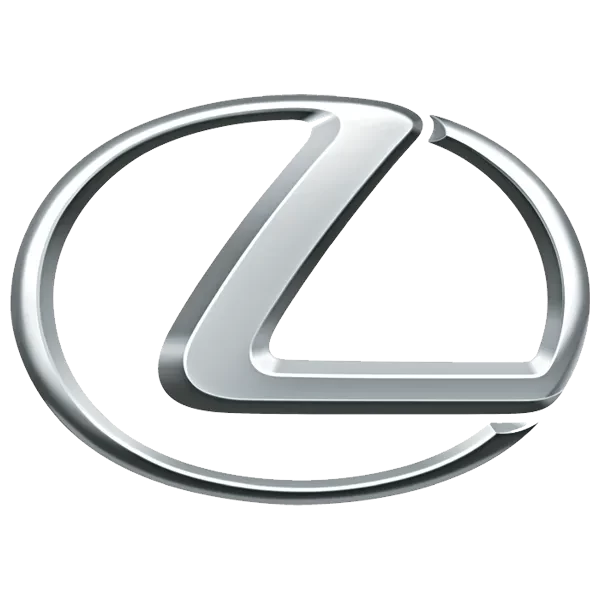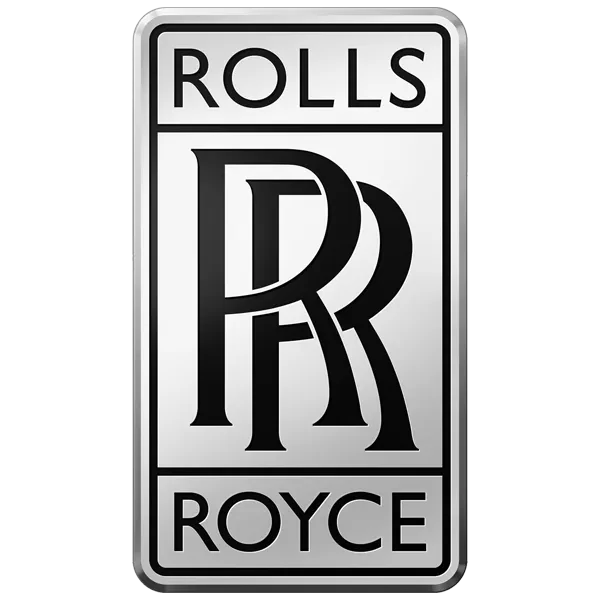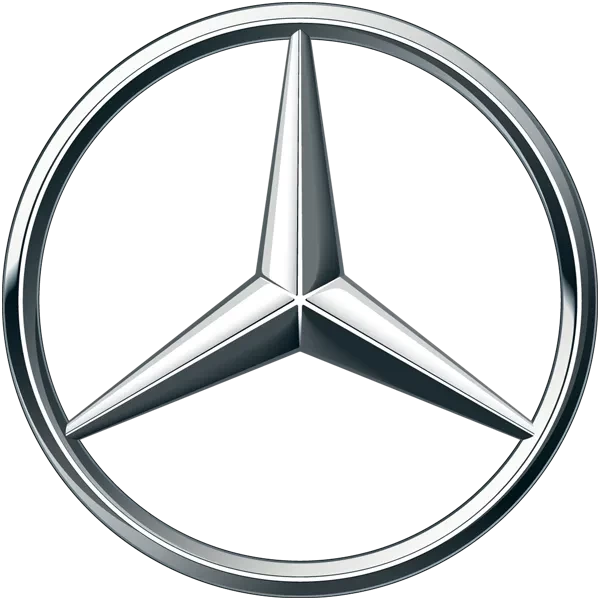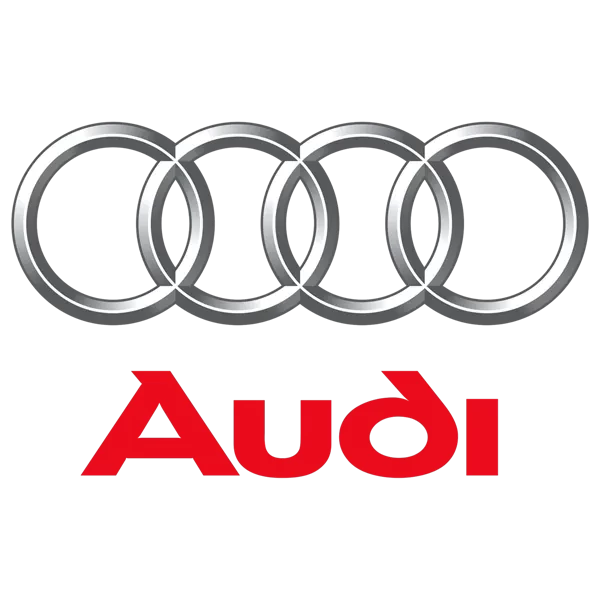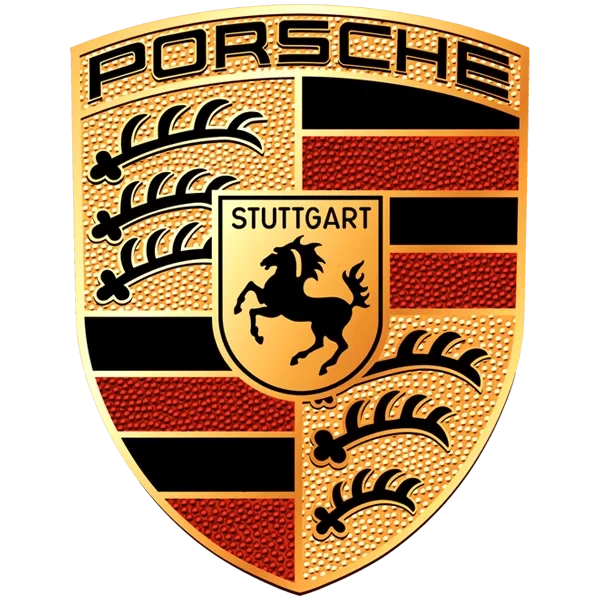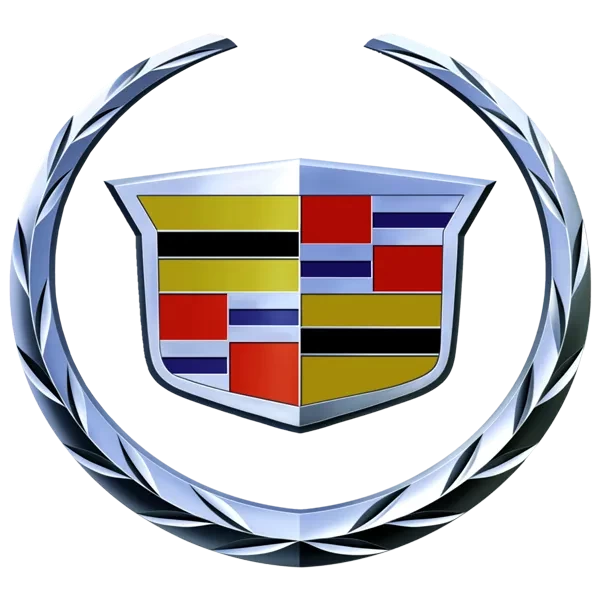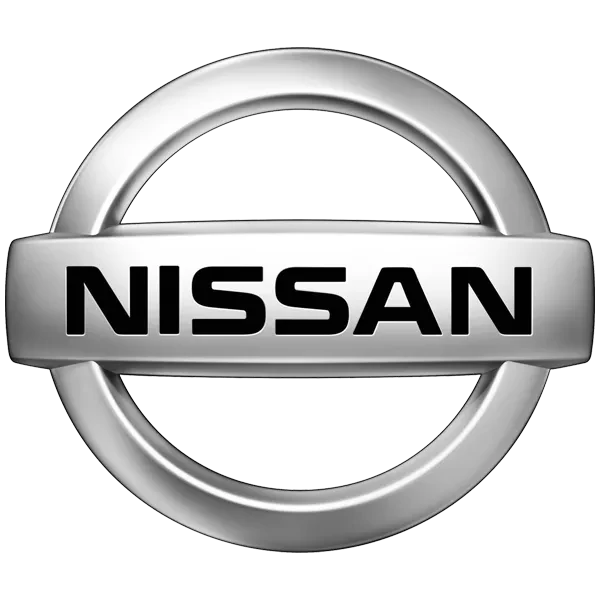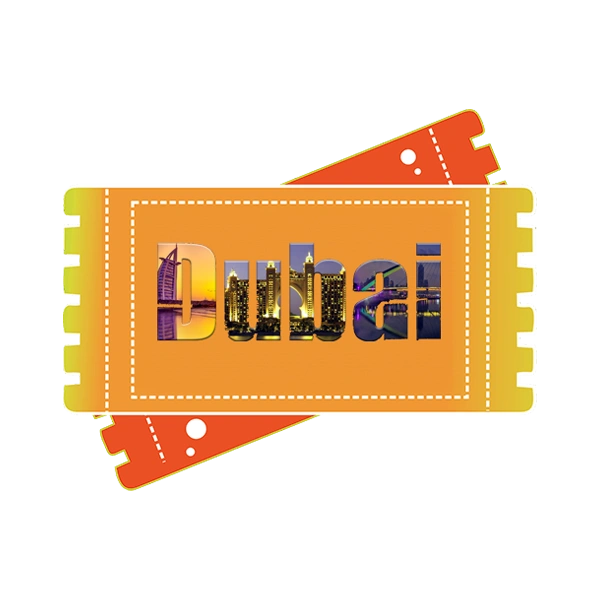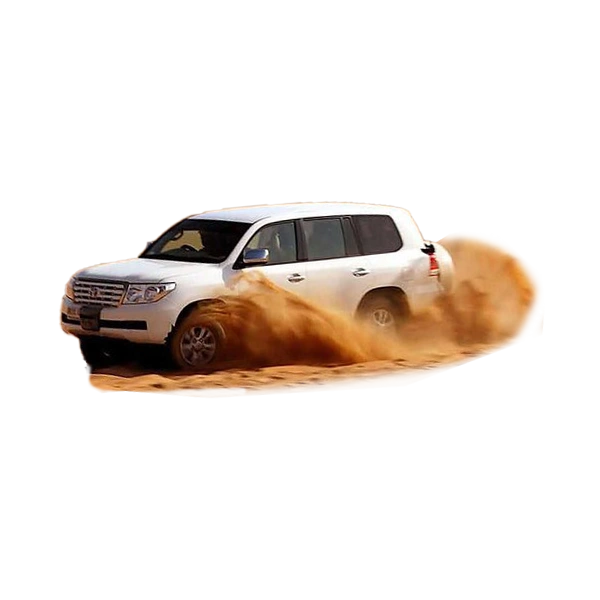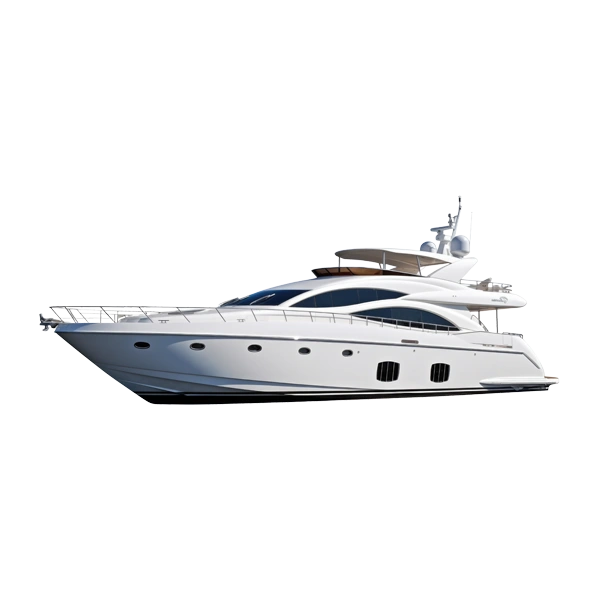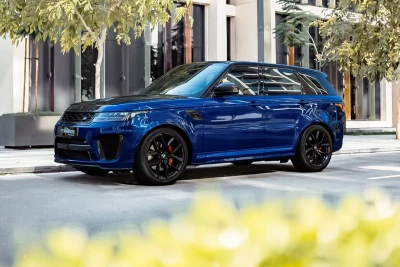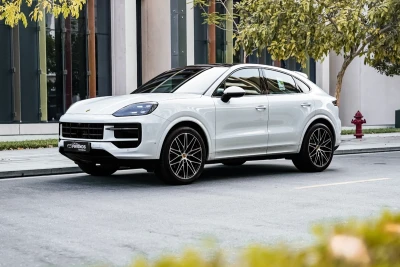21 Common Range Rover Problems and Solutions
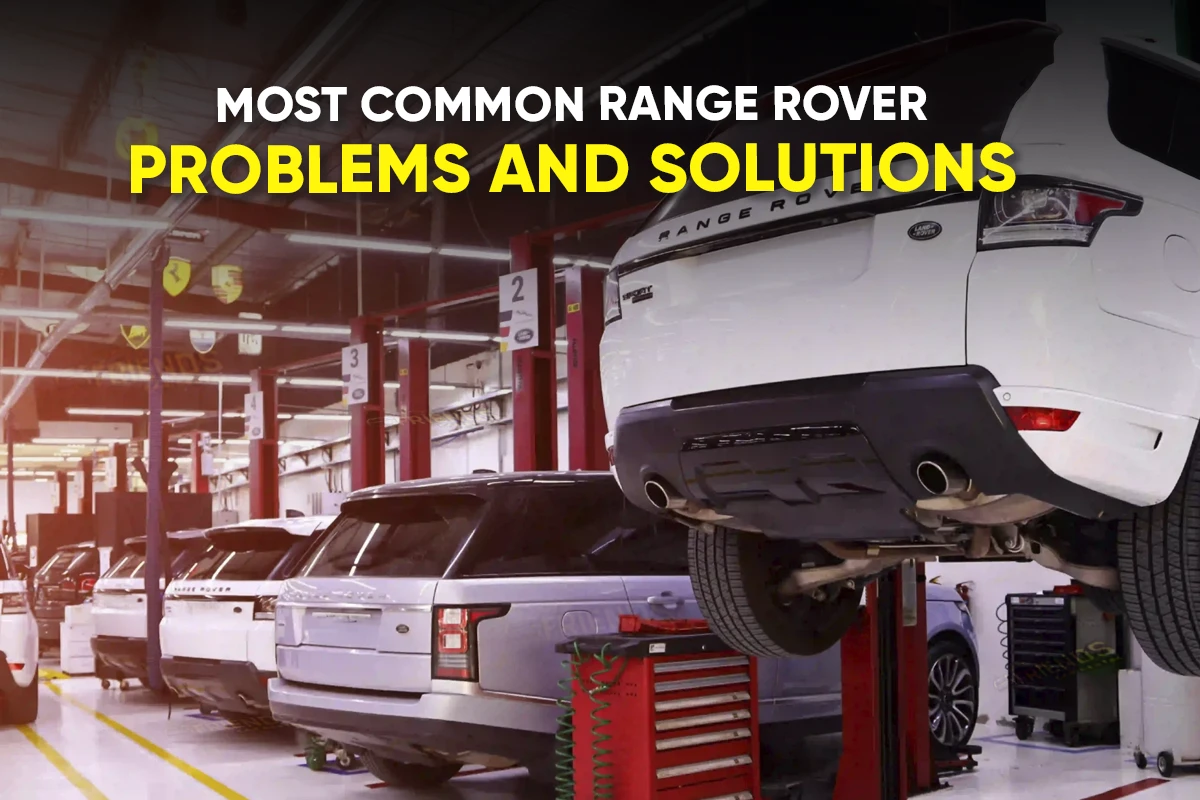
Range Rovers are the symbol of luxury and prestige — incredibly admired on the streets of Dubai and beyond. Despite its popularity and a serious push for the perfect luxury auto creation, some luxurious SUV models, such as the Evoque, Velar, and Sports, still encounter common problems. This comprehensive guide cuts through the most common Range Rover problems and solutions, enabling you to understand and fix them at your convenience. Whether you currently own a Range Rover or plan to do so in the near future, understanding these frequent Range Rover problems & their practical fixes ensures a hassle-free ownership experience. Let’s dive in to keep your vehicle running smoothly and safely on the UAE's diverse roads.
21 common Range Rover Problems and their solutions/fixes:
Air Suspension Failures: Schedule diagnostic scans; replace worn air springs and compressors with genuine parts; clean air lines quarterly to combat dust buildup; avoid excessive loads during off-road trips.
Gearbox Troubles: Inspect transmission fluid levels; update transmission software biannually; replace worn clutches or gears with OEM parts; drive smoothly to minimize strain.
Drivetrain Issues: Conduct drivetrain diagnostics; replace worn components with genuine parts; maintain fluid levels with OEM lubricants; avoid aggressive off-roading.
Suspension Component Failures: Schedule suspension inspections; replace faulty springs or link arms with genuine parts; perform a precision wheel alignment; rotate tires biannually to catch uneven wear.
Fuel System Leaks: Perform a pressure test; replace faulty injectors or lines with OEM parts; use premium, high-octane fuel; inspect fuel lines quarterly for wear.
Oil Filter Housing Leaks: Check oil levels weekly; replace faulty seals or housing at a certified workshop; schedule oil changes; inspect for leaks after every drive.
Transmission Oil Pressure Issues: Inspect transmission fluid; replace faulty regulators or seals; drive conservatively; schedule immediate checks for slipping gears.
General Electrical Problems: Test battery voltage and wiring integrity; replace faulty modules and sensors with OEM parts; update vehicle software every six months; clean electrical connectors quarterly.
Engine Electrics (Crank Position Sensor): Run an OBD-II scan; replace defective sensors with genuine parts; inspect wiring harnesses quarterly; maintain engine oil levels.
Sat-Nav/Infotainment System Malfunctions: Install software updates every six months; replace faulty modules with OEM parts; avoid aftermarket accessories; test screen functionality weekly.
Air Conditioning Issues: Schedule AC system inspections; replace faulty compressors or hoses with OEM parts; recharge refrigerant biannually; clean AC vents monthly.
Instrument Cluster Failures: Perform diagnostic scans; replace defective units with OEM parts; update dashboard software quarterly; inspect electrical connections for corrosion monthly.
Fan Control Module Short Circuits: Test fan control modules and wiring; replace faulty components with genuine parts; clean electrical connectors quarterly; monitor coolant levels weekly.
Near Field Sensing Module (NFSM) Overheating: Check for recalls using your VIN; update camera software every six months; park in shaded areas to reduce module stress; test cameras weekly.
Autonomous Emergency Braking (AEB) Unavailability: Update AEB software every six months; replace faulty sensors with OEM parts; clean sensors monthly to prevent dust buildup; perform a diagnostic scan biannually.
Directional Indicator Failures: Inspect indicator wiring and modules; replace faulty components with genuine parts; test signals weekly; clean connectors quarterly.
Front Direction Indicator Lamp Failure: Check front indicator bulbs; replace faulty units with OEM bulbs; inspect wiring monthly; test signals before every drive.
Seatbelt Buckle Latching Issues: Verify recall status with your VIN; test seatbelt functionality biweekly; clean buckles quarterly to remove dust; address latching issues immediately.
Wheel Nuts Cracking: Inspect wheel nuts; replace cracked nuts with genuine parts; use a torque wrench for proper tightening; check tire pressure monthly.
Second Row Seat Backrest Issues: Test seat latches biweekly; replace faulty components with genuine parts; verify recall status; inspect seats quarterly for wear.
Leaks from Engine, Sunroof, and Tailgate: Inspect engine gaskets, sunroof drains, and tailgate seals; replace faulty components with OEM parts; clean drains monthly with compressed air; use UV dye tests to detect leaks early.
Mechanical Issues
1. Air Suspension Failures
What Happens: Your Range Rover may slump to one side, delivering a jarring ride that feels more like a rugged cart than a luxury SUV. Dashboard warning lights flash persistently, often accompanied by unsettling clunking noises from beneath the vehicle. Off-road adventures or even city drives become dangerous as the suspension struggles to maintain stability.
Why It Occurs: The air suspension system, a hallmark of Range Rover’s smooth handling, surrenders to wear in components like air springs or compressors, particularly under the UAE’s scorching heat. Dust and sand infiltration, common in desert climates, accelerate leaks in the system’s intricate air lines. Neglected maintenance or overloading the vehicle further exacerbates these failures, as noted in Range Rover owner forums.
Impact: Unstable handling heightens the risk of accidents on Dubai’s bustling highways or rugged off-road trails, jeopardizing passenger safety. Repair costs, often exceeding AED 5,000 for compressor or spring replacements, can strain your finances significantly. Persistent issues not only diminish the vehicle’s resale value but also erode the luxurious driving experience that Range Rover promises.
How to Fix: Act swiftly by scheduling a diagnostic scan every 8,000 km. Use a Land Rover-approved OBD-II tool to pinpoint air spring or compressor faults. Replace worn components with genuine Range Rover parts to restore ride quality, and enlist a certified technician to ensure precise installation. Prevent issues by cleaning air lines quarterly to combat dust buildup and avoiding excessive loads, especially during off-road trips in Dubai’s deserts.
Affected Models: Range Rover, Range Rover Sport, Range Rover Evoque
Related: 17 Common GMC Problems & Solutions
2. Gearbox Troubles
What Happens: Gear shifts turn into a frustrating ordeal, with your Range Rover lurching or hesitating as you navigate the UAE’s bustling streets. Dashboard warnings illuminate, signaling issues that disrupt seamless acceleration. Drivers often report a jarring sensation, as if the transmission is caught in a tug-of-war with itself.
Why It Occurs: Worn transmission components, such as clutches or gears, degrade under the strain of aggressive driving or the UAE’s stop-and-go traffic. Software glitches in the transmission control unit, often unaddressed due to irregular updates, contribute significantly to these common Range Rover issues. Reliability surveys highlight how skipped maintenance intervals amplify these problems in Range Rover models.
Impact: Unreliable shifting can leave you stranded in Dubai’s hectic traffic, posing safety risks to you and other drivers. Repair bills, often surpassing AED 8,000 for transmission overhauls, deliver a hefty blow to your wallet. Ongoing gearbox issues sap the confidence and performance expected from a premium SUV.
How to Fix: Inspect transmission fluid levels every 15,000 km with a dipstick check, topping up, or replacing with Range Rover-approved ATF to combat the UAE’s heat-induced wear. Engage a Land Rover specialist to update transmission software biannually and replace worn clutches or gears with OEM parts for lasting reliability. Drive smoothly in Dubai’s traffic to minimize strain, and schedule immediate diagnostics for any jerky shifts to prevent costly overhauls.
Affected Models: Range Rover Sport, Range Rover Evoque
3. Drivetrain Issues
What Happens: Your Range Rover shudders with unsettling vibrations, especially during acceleration, while power delivery feels sluggish or inconsistent. Strange noises, like grinding or whining, echo from the undercarriage, and gear engagement becomes a struggle. These symptoms disrupt both city commutes and off-road escapades, robbing the vehicle of its robust character.
Why It Occurs: Worn differentials or driveshaft components, stressed by the UAE’s demanding terrains, are the primary culprits, as reported in owner discussions. Software errors in the drivetrain control system, often unaddressed due to infrequent updates, exacerbate these issues. Harsh driving conditions, like frequent off-roading without proper maintenance, accelerate component wear.
Impact: Compromised power delivery heightens risks on the UAE’s fast highways, where sudden power loss can lead to accidents. Repairs, including differential replacements, can cost upwards of AED 6,000. Unresolved drivetrain issues diminish the vehicle’s off-road prowess and overall reliability.
How to Fix: Conduct drivetrain diagnostics every 12,000 km using a certified scan tool to detect differential or software faults early. Replace worn components with genuine Range Rover parts at a trusted UAE workshop. Ensure proper torque settings for durability. Maintain fluid levels with OEM-approved lubricants every 20,000 km. Avoid aggressive off-roading to extend drivetrain life in Dubai’s diverse settings.
Affected Models: Range Rover, Range Rover Sport
Related: 17 Common MINI Problems & Solutions
4. Suspension Component Failures
What Happens: Clunking sounds reverberate through your Range Rover, accompanied by uneven tire wear that makes steering feel imprecise. The vehicle may lean or sway excessively, turning smooth drives into a bumpy ordeal. These issues signal failing suspension components, undermining the SUV’s renowned stability.
Why It Occurs: Front springs or rear link arms succumb to wear, particularly on UAE’s rugged roads or desert trails, as noted in reliability reports. Manufacturing defects in certain components can hasten failure, especially in high-mileage models. Neglecting regular suspension checks can further aggravate these common Range Rover problems.
Impact: Poor handling increases the likelihood of accidents in Dubai’s congested traffic or during off-road adventures, compromising occupant safety. Suspension repairs can cost upwards of AED 3,000, denting your finances. Persistent issues degrade ride comfort and reduce the vehicle’s appeal.
How to Fix: Schedule suspension inspections every 10,000 km at a Land Rover service center UAE. Focus inspection on springs and link arms for wear or cracks. Replace faulty components with genuine parts, followed by a precision wheel alignment to restore handling. Rotate tires biannually and inspect for uneven wear to catch issues early.
Affected Models: Range Rover Evoque, Range Rover
5. Fuel System Leaks
What Happens: A pungent fuel odor spreads around your Range Rover, often accompanied by visible puddles beneath the vehicle or a noticeable drop in fuel efficiency. Power delivery falters, and dashboard warnings may flicker, signaling issues in the fuel system. These symptoms disrupt drives and raise serious safety concerns.
Why It Occurs: Worn injector seals or damaged fuel lines, degraded by the UAE’s intense heat, are common causes, as highlighted in many online owner discussion forums. Corrosion from low-quality fuel or skipped maintenance accelerates these leaks. Manufacturing flaws in fuel system components can also contribute to this persistent issue.
Impact: Fuel leaks pose significant fire hazards, especially on the UAE’s sun-scorched roads, endangering occupants and passersby. Repair costs often exceed AED 2,500 for injector or line replacements. Unaddressed leaks can damage the engine and lower resale value.
How to Fix: Perform a pressure test every 8,000 km at a Range Rover-certified garage/workshop to detect fuel leaks early. Replace faulty injectors or lines with OEM parts to ensure safety. Use premium, high-octane fuel to minimize corrosion, and inspect fuel lines quarterly for wear, especially in Dubai’s dusty conditions. Act immediately on fuel odors or dashboard alerts to prevent fire risks and costly engine damage.
Affected Models: Range Rover, Range Rover Sport, and Range Rover Evoque
Related: 23 Common Honda Problems & Solutions
6. Oil Filter Housing Leaks
What Happens: You will notice oil spots/pools beneath your parked Range Rover, often accompanied by a burnt oil smell during drives. These are clear signals of a compromised oil filter housing. Dashboard warnings indicate low oil levels, and engine performance may wane. These leaks threaten the heart of your vehicle’s engine.
Why It Occurs: Faulty seals or cracked housing units, stressed by the UAE’s extreme temperatures, are the primary culprits, as noted in NHTSA recalls. Prolonged exposure to heat and dust weakens these components over time. Inconsistent oil changes or using substandard oil worsen this common Range Rover issue.
Impact: Oil loss risks catastrophic engine damage, potentially leaving you stranded in the UAE’s unforgiving heat. Repairs, costing upwards of AED 2,000, can strain your budget significantly. Persistent leaks diminish engine longevity and resale value.
How to Fix: Check oil levels weekly using a dipstick. Top up with Range Rover-approved synthetic oil (e.g., 5W-30). Replace faulty seals or housing at a Land Rover-certified workshop, ensuring the use of OEM parts. Schedule oil changes every 8,000 km and inspect for leaks after every drive in Dubai’s conditions to prevent engine damage.
Affected Models: Range Rover, Range Rover Sport, Velar, Defender, and Discovery
7. Transmission Oil Pressure Issues
What Happens: Your vehicle’s gears slip unexpectedly, or shifts become erratic, making drives in the UAE’s traffic feel unpredictable. Dashboard warning light up, and the vehicle may struggle to maintain smooth acceleration. These symptoms point to transmission oil pressure issues, disrupting performance.
Why It Occurs: Faulty pressure regulators or internal leaks, worsened by the UAE’s stop-and-go traffic, trigger these common problems, as reported in recall data. Overheating from high temperatures strains the transmission system further. Irregular fluid changes or using non-approved fluids contribute to these failures.
Impact: Unreliable gear shifts increase accident risks on Dubai’s busy roads, compromising safety. Repair costs often exceed AED 4,000 for regulator replacements. Ongoing issues can lead to complete transmission failure, sidelining your vehicle.
How to Fix: Inspect transmission fluid every 15,000 km. Get a Land Rover specialist to diagnose pressure faults and replace regulators or seal leaks using OEM parts. Drive conservatively in Dubai’s traffic and schedule immediate checks for slipping gears to avoid costly transmission failure.
Affected Models: Range Rover, Range Rover Sport
Related: 23 Common Ford Problems & Solutions
Electrical System Issues
8. General Electrical Problems
What Happens: You will frequently notice your vehicle’s dashboard light show warning alerts. Accessories like lights or power windows flicker or fail intermittently. Strange electrical noises may hum from the engine bay, disrupting the vehicle’s reliability. These issues create an unpredictable driving experience in the UAE’s demanding road conditions.
Why It Occurs: Faulty wiring, degraded sensors, or failing modules, battered by the UAE’s heat and humidity, are common culprits, as noted in owner complaints. Poor connections or corrosion from dust exposure exacerbate these Range Rover common problems. Skipped electrical maintenance leaves systems vulnerable to failure.
Impact: Erratic electrical systems risk breakdowns in Dubai’s congested traffic, threatening occupant safety and stranding drivers. Repairs, often costing over AED 3,000 for module replacements, burden the owner's finances. Unresolved issues frustrate owners and diminish the luxury experience.
How to Fix: Test battery voltage and wiring integrity every 8,000 km with a multimeter at a UAE Land Rover service center. Get any faulty modules & sensors replaced with OEM parts. Update vehicle software every six months to prevent glitches, and clean electrical connectors quarterly. Act swiftly on warning lights to prevent system-wide failures and ensure reliable performance.
Affected Models: Range Rover, Range Rover Sport, Range Rover Evoque
9. Engine Electrics (Crank Position Sensor)
What Happens: Your vehicle stutters or refuses to start, with rough idling or sudden stalling disrupting your journey. A persistent check engine light glows on the dashboard, signaling crank position sensor issues. These symptoms turn routine drives into a nerve-wracking gamble.
Why It Occurs: Worn or faulty crank position sensors, critical for engine timing, fail, as reported in online forums. Electrical shorts from degraded wiring accelerate sensor degradation. Inconsistent maintenance leaves these components prone to failure.
Impact: Engine failures can strand you in the UAE’s scorching heat, posing safety and convenience risks. Repairs cost over AED 1,500, involving sensor replacements. Persistent issues risk severe engine damage, impacting reliability.
How to Fix: Run an OBD-II scan every 12,000 km at a certified service center. Get a professional to detect crank sensor faults and replace defective units with genuine Range Rover parts for precise engine timing. Inspect wiring harnesses quarterly for heat-induced wear, and maintain engine oil levels with OEM-approved 5W-30 to reduce stress. Address stalling or starting issues immediately to prevent engine damage in Dubai’s harsh conditions.
Affected Models: Range Rover
Related: 17 Common BMW Problems & Solutions
10. Sat-Nav/Infotainment System Malfunctions
What Happens: The infotainment screen freezes or reboots randomly, leaving you without navigation or entertainment. Navigation errors misguide you, and warning lights may flicker unexpectedly. These malfunctions mar the premium experience Range Rover promises.
Why It Occurs: Software glitches are common Range Rover issues in complex infotainment systems, as noted in owner discussions. Hardware failures in modules or wiring issues contribute to this problem. Infrequent software updates leave systems vulnerable to crashes.
Impact: Unreliable navigation complicates drives in Dubai’s intricate streets, frustrating drivers. You might have to spend upwards of AED 2,000 for module replacements. Persistent issues diminish the vehicle’s luxury appeal and driver satisfaction.
How to Fix: Download and install infotainment software updates every six months from Land Rover’s official portal to eliminate glitches. Replace faulty modules with OEM parts at a certified dealership. Avoid aftermarket accessories that disrupt system stability. Test screen functionality weekly, especially before long drives across the Emirates.
Affected Models: Range Rover Evoque, Range Rover Sport,
11. Air Conditioning Issues
What Happens: The cabin feels like a sauna, with weak cooling or no air flow despite the AC running. Strange noises, like grinding or hissing, emanate from the system, and dashboard warnings may appear. These issues make the UAE’s blistering heat unbearable for occupants.
Why It Occurs: Compressor failures or refrigerant leaks, stressed by the UAE’s extreme temperatures, are common causes, as highlighted in reliability reports. Dust accumulation in AC components accelerates wear. Skipped maintenance intervals exacerbate these failures, reducing system efficiency.
Impact: Inadequate cooling poses health risks in Dubai’s scorching climate, affecting driver and passenger well-being. Repairs, often costing over AED 3,000 for compressor replacements, hit your finances hard. Unresolved issues make every drive uncomfortable and frustrating.
How to Fix: Schedule AC system inspections every 8,000 km at a Land Rover service center. Check refrigerant levels and replace faulty compressors or hoses with OEM parts. Recharge with Range Rover-approved R134a refrigerant biannually to combat the UAE’s heat. Clean AC vents monthly to prevent dust buildup. Monitor cooling performance after every drive in Dubai’s climate to ensure comfort and prevent costly repairs.
Affected Models: Range Rover, Range Rover Sport, Range Rover Evoque
Related: 25 Common Chevrolet Problems & Solutions
12. Instrument Cluster Failures
What Happens: The instrument cluster goes dark or displays erratic data, leaving you without critical information like speed or fuel levels. Flickering screens or persistent warning lights create confusion during drives. These failures turn your dashboard into an unreliable puzzle.
Why It Occurs: Software glitches or electrical faults disrupt the cluster, as noted in owner forums. Aging components or poor connections contribute to these issues. Neglecting regular electrical checks leaves the system prone to failure.
Impact: Missing gauges increase crash risks in Dubai’s fast-paced traffic, compromising safety.
Repairs are expensive, costing around AED 2,500 for cluster replacements. Persistent issues frustrate drivers and erode confidence in the vehicle.
How to Fix: Perform diagnostic scans every 8,000 km with a Land Rover-approved OBD-II tool to identify cluster faults. Replace defective units with OEM parts at a UAE dealership. Update dashboard software quarterly to prevent glitches, and inspect electrical connections for dust corrosion monthly. Address flickering displays immediately to ensure critical data visibility in Dubai’s traffic.
Affected Models: Range Rover
13. Fan Control Module Short Circuits
What Happens: Overheating warnings flash on your dashboard, accompanied by a burnt electrical smell or unusual noises from the engine bay. The cooling fan may fail to operate, causing the engine to run hot. These symptoms signal a serious issue that demands immediate attention.
Why It Occurs: Short circuits in the fan control module, triggered by the UAE’s harsh climate, cause failures, as reported in recall data. Worn wiring or module degradation accelerates the problem. Infrequent maintenance leaves cooling systems vulnerable to electrical faults.
Impact: Overheating risks catastrophic engine damage, potentially stranding you in the UAE’s heat. Fan control module repairs can easily cost upwards of AED 2,000, adding financial pressure. Unresolved issues pose fire hazards, threatening safety.
How to Fix: Test fan control modules and wiring every 12,000 km with a multimeter at a certified UAE workshop. Remove faulty components & replace with genuine Range Rover parts. Clean electrical connectors quarterly to prevent dust-induced shorts and monitor coolant levels weekly. Schedule immediate diagnostics for overheating warnings to avoid engine damage and fire risks.
Affected Models: Range Rover
Related: 25 Common Hyundai Problems & Solutions
14. Near Field Sensing Module (NFSM) Overheating
What Happens: Your Range Rover’s 3D surround and rearview cameras fail, displaying blank or flickering screens that hinder parking visibility. Warning messages flood the dashboard, signaling NFSM overheating. These issues make navigating the UAE’s tight parking spaces a daunting task.
Why It Occurs: The NFSM, critical for camera functionality, overheats in the UAE’s intense heat, as noted in NHTSA recalls. Poor ventilation or software issues exacerbate module failures. High ambient temperatures push these components beyond their limits.
Impact: Reduced visibility increases collision risks in Dubai’s crowded lots, compromising
safety. NFSM repairs generally cost over AED 2,500 with a module replacement. Persistent issues undermine confidence in safety systems.
How to Fix: Check recall status via NHTSA’s website using your VIN, and secure free NFSM replacements at a Land Rover dealer in the UAE. Update camera software every six months to enhance heat resistance, and park in shaded areas to reduce module stress. Test cameras are displayed weekly to ensure reliable parking assistance.
Affected Models: Range Rover Sport, Range Rover Evoque, Range Rover Velar
15. Autonomous Emergency Braking (AEB) Unavailability
What Happens: Warning alerts signal that your Range Rover’s AEB system is offline, disabling critical automatic braking functions. The dashboard may display persistent error messages, leaving you without a key safety feature. This failure turns high-speed UAE drives into a riskier endeavor.
Why It Occurs: Software glitches or faulty sensors, stressed by the UAE’s dusty and hot conditions, disable AEB, as reported in reliability data. Infrequent updates exacerbate system failures. Environmental factors like sand accumulation can impair sensor performance.
Impact: Without AEB, collision risks rise on the UAE’s rapid highways, endangering occupants. AEB sensor repairs cost above AED 2,000 with sensor replacements, hitting owner budgets. Persistent issues erode trust in the vehicle’s safety systems.
How to Fix: Update AEB software every six months via a Land Rover dealer to restore functionality. Replace faulty sensors with OEM parts at a certified UAE workshop. Clean sensors monthly to prevent dust buildup. Rest AEB performance biannually with a diagnostic scan. Address warning alerts immediately to ensure safety on UAE highways.
Affected Models: Range Rover
Related: 25 Common Nissan Problems & Solutions
16. Directional Indicator Failures
What Happens: Your Range Rover’s turn signals stop working, leaving other drivers unaware of your intentions. Dashboard warnings may flash, and indicators fail to blink, creating confusion on the road. These issues disrupt safe navigation in the UAE’s busy traffic.
Why It Occurs: Faulty wiring or control modules, degraded by the UAE’s heat and humidity, cause these failures, as noted in owner discussions. Corrosion from dust exposure accelerates the problem. Neglecting electrical maintenance leaves indicators vulnerable.
Impact: Reduced visibility increases crash risks in Dubai’s congested streets, posing safety concerns. Indicator repairs in the Emirates can cost around AED 1,000, which adds financial strain to your finances. Unresolved issues risk fines and compromise road safety.
How to Fix: Inspect indicator wiring and modules every 8,000 km. Get a professional to replace faulty components with genuine parts. Test signals weekly, especially before navigating Dubai’s traffic, and clean connectors quarterly to prevent corrosion. Act swiftly on dashboard warnings to avoid fines and maintain safety.
Affected Models: Range Rover
17. Front Direction Indicator Lamp Failure
What Happens: The front indicators on your Range Rover dim or fail entirely, leaving no signal for turns or lane changes. Dashboard alerts may appear, but the issue often goes unnoticed until other drivers react. This subtle failure creates significant hazards in traffic.
Why It Occurs: Burnt-out bulbs or wiring issues, worsened by the UAE’s harsh climate, are common causes, as reported in owner forums. Environmental wear accelerates bulb degradation. Infrequent checks leave these components unchecked until failure occurs.
Impact: Poor visibility heightens collision risks on UAE roads, endangering drivers and passengers. Repairs, costing around AED 800 for bulb replacements, impact your budgets. Persistent issues risk regulatory penalties and safety concerns.
How to Fix: Check front indicator bulbs every 8,000 km at a UAE Land Rover workshop. Get replacements of faulty units with OEM-approved bulbs for reliable performance. Inspect wiring monthly for heat-induced wear, and test signals before every drive in Dubai’s traffic. Replace any dim or non-working bulbs immediately to ensure visibility and avoid fines.
Affected Models: Range Rover
Related: 25 Common Toyota Problems & Solutions
Safety Issues
18. Seatbelt Buckle Latching Issues
What Happens: Seatbelts in your Range SUV refuse to latch securely, or they release unexpectedly, compromising occupant protection. Drivers may struggle to fasten their belts, and warning lights may signal issues. These failures, often linked to recalls, undermine a critical safety feature.
Why It Occurs: Faulty buckle mechanisms or manufacturing defects, as noted in NHTSA recall data, cause these issues. Frequent use in the UAE’s family-oriented vehicles accelerates wear. Environmental factors like dust can jam latching mechanisms over time.
Impact: Unsecured seatbelts drastically increase injury risks in crashes & accidents, threatening occupant safety. Seatbelt buckle latching issue repairs cost around AED 1,500, straining your finances, especially if not covered by recalls. Persistent issues risk legal penalties and erode driver confidence.
How to Fix: Verify recall status using your VIN on NHTSA’s website, and secure free buckle replacements at a Land Rover dealer in the UAE. Test seatbelt functionality biweekly, ensuring secure latching, and clean buckles quarterly to remove dust in Dubai’s climate. Address latching issues immediately to ensure occupant safety and comply with UAE regulations.
Affected Models: Range Rover, Range Rover Sport
19. Wheel Nuts Cracking
What Happens: Vibrations or wobbling during drives signal cracked wheel nuts, with visible damage sometimes apparent on inspection. Your Range Rover may feel unstable, especially at high speeds. This alarming issue risks catastrophic wheel detachment.
Why It Occurs: Material defects or excessive wear from the UAE’s rough roads cause wheel nuts to crack, as reported in reliability data. Improper torque during maintenance accelerates the problem. Frequent off-roading without regular checks heightens risks.
Impact: Wheel detachment poses severe accident risks on UAE highways, endangering lives. Repairs cost over AED 1,200 with nut replacements, adding financial pressure. Unresolved issues compromise safety and reliability.
How to Fix: Inspect wheel nuts every 8,000 km at a certified UAE garage. Get cracked ones replaced with genuine Range Rover nuts to ensure secure fastening. Use a torque wrench for proper tightening during tire rotations. Check tire pressure monthly to reduce stress in Dubai’s conditions. Act immediately on vibrations to prevent wheel detachment and ensure safety.
Affected Models: Range Rover
Related: 20 Common Mercedes-Benz Problems & Solutions
20. Second Row Seat Backrest Issues
What Happens: Second-row seats in your Range wobble or fail to lock securely, with latches refusing to hold firm. Passengers may notice loose backrests, and warning alerts may appear. These issues compromise safety for rear occupants.
Why It Occurs: Worn or defective latches, stressed by frequent use in family vehicles, cause these failures, as noted in owner complaints. Manufacturing flaws in certain models contribute to the issue. UAE’s heat can degrade latch materials over time.
Impact: Unsecured seats increase injury risks in UAE collisions, posing serious safety concerns. Seat backrest issue repairs cost around AED 1,500. Persistent issues reduce passenger confidence and vehicle appeal.
How to Fix: Test second-row seat latches biweekly, replacing faulty components with genuine Range Rover parts at a UAE Land Rover dealer. Verify recall status for free repairs, and inspect seats quarterly for wear in Dubai’s climate. Ensure secure latching before every trip to protect passengers and comply with safety standards.
Affected Models: Range Rover, Range Rover Sport
Body and Interior Issues
21. Leaks from Engine, Sunroof, and Tailgate
What Happens: Damp carpets, musty odors, or oil puddles under your Range Rover reveal leaks from the engine, sunroof, or tailgate. Water seeps into the cabin after rain or car washes, and oil loss triggers dashboard warnings. These issues tarnish the vehicle’s premium interior and performance.
Why It Occurs: Worn gaskets, clogged sunroof drains, or failing tailgate seals, exacerbated by
The UAE’s dust and heat cause these leaks. Poor maintenance or manufacturing defects accelerate seal degradation. Environmental exposure weakens components over time.
Impact: Leaks risk mold growth or engine damage, compromising cabin health and vehicle longevity. Repairs can easily cost upwards of AED 2,000, straining your finances. Unresolved issues diminish resale value and degrade the luxury experience.
How to Fix: Inspect engine gaskets, sunroof drains, and tailgate seals every 8,000 km at a Land Rover-certified UAE workshop. Get certified professionals to replace faulty components with OEM parts. Clean drains monthly with compressed air to prevent clogs in Dubai’s dusty conditions. Use UV dye tests to detect leaks early. Check for dampness or oil after car washes or rain to prevent mold and engine damage.
Affected Models: Range Rover, Range Rover Sport, Range Rover Evoque
Related: Electric Car Problems and Solutions
Final Thoughts
Owning a Range Rover in the UAE is about experiencing the ultimate in luxury and capability, whether cruising through the city or tackling desert dunes. Like any sophisticated vehicle, a Range Rover requires informed care. By understanding the common mechanical, electrical, and safety issues we've covered—you are now better equipped to identify and address potential problems.
Proactive care, regular maintenance, and swift attention to warning signs are not just recommendations; they are key to a lasting and rewarding ownership experience in the demanding climate of the Emirates. With this knowledge, you can ensure your Range Rover remains a reliable and safe vehicle for years to come. Feel free to share your Range Rover maintenance tips and experiences in the comments below.
Written by: FriendsCarRental
Published at: Tue, Aug 5, 2025 3:05 PM
Leave a Reply
Your email address will not be published. Required fields are marked *
Car Rental in Dubai
AED 2500
DAY
AED 0
MONTH
-
 SUV
SUV -
 4 Doors
4 Doors -
 5 Seats
5 Seats
- 1 Day Rental Available
- Deposit: Not Required
- Insurance Included
AED 5500
DAY
AED 0
MONTH
-
 Sports
Sports -
 2 Doors
2 Doors -
 2 Seats
2 Seats
- 1 Day Rental Available
- Deposit: Not Required
- Insurance Included
AED 1200
DAY
AED 0
MONTH
-
 SUV
SUV -
 4 Doors
4 Doors -
 5 Seats
5 Seats
- 1 Day Rental Available
- Deposit: Not Required
- Insurance Included
AED 1600
DAY
AED 0
MONTH
-
 SUV
SUV -
 4 Doors
4 Doors -
 5 Seats
5 Seats
- 1 Day Rental Available
- Deposit: Not Required
- Insurance Included
AED 1500
DAY
AED 28500
MONTH
-
 SUV
SUV -
 4 Doors
4 Doors -
 5 Seats
5 Seats
- 1 Day Rental Available
- Deposit: Not Required
- Insurance Included

 عربي
عربي
 English
English
 Français
Français
 Русский
Русский
 中国人
中国人
 Nederlands
Nederlands
 Española
Española
 Türkçe
Türkçe
 Italiana
Italiana



